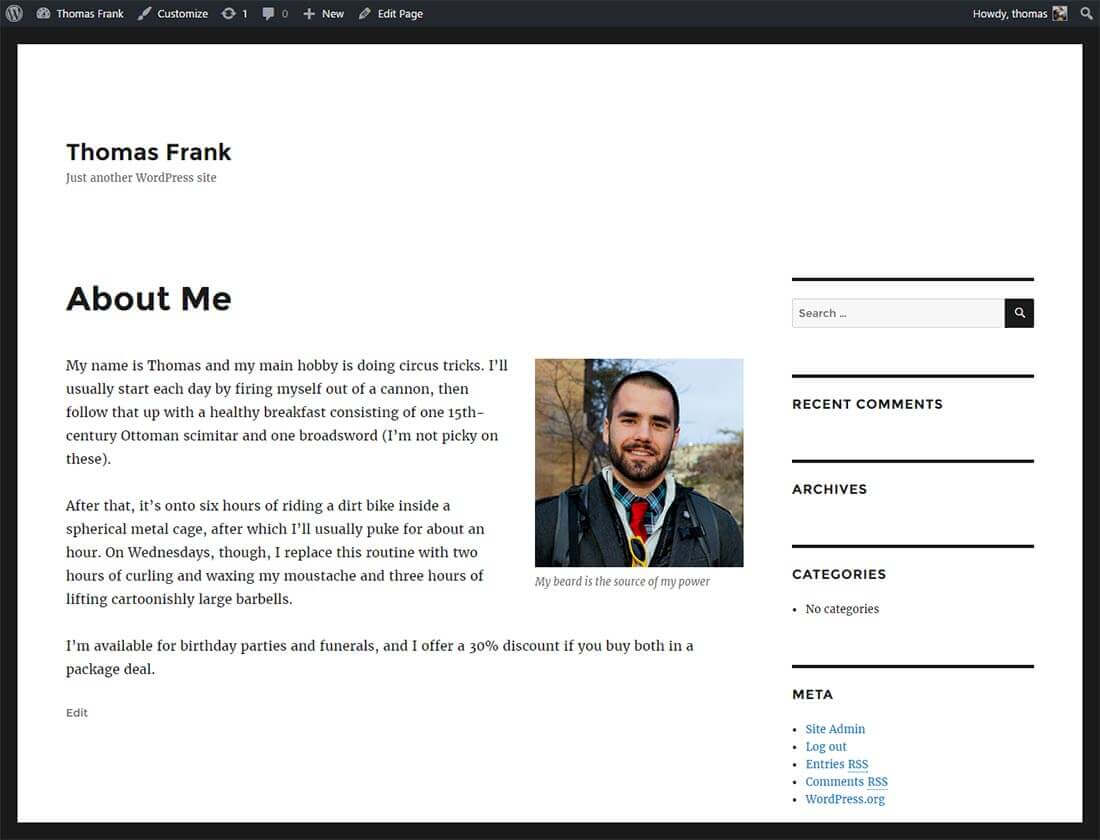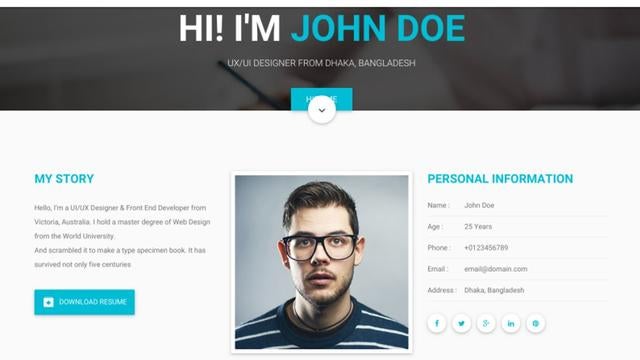A personal website is a space on the internet owned by an individual. It showcases their work, ideas, and personality.
In today’s digital age, a personal website serves as your online business card. It provides a unique platform for self-expression, allowing you to share your story, skills, and achievements. Unlike social media profiles, a personal website offers complete control over content and design.
This control helps in creating a distinct personal brand. Whether you’re a job seeker, freelancer, or hobbyist, having a personal website can set you apart. It builds credibility and offers a professional touch. Plus, it’s a great way to connect with like-minded people. Ready to learn more? Let’s dive into the world of personal websites.

Credit: nocodeuniversity.net
Table of Contents
Introduction To Personal Websites
A personal website is your own space online. It tells your story. Shows your skills and work. Helps you connect with others. Networking becomes easier. You can showcase your portfolio. Job opportunities may arise. It acts like your digital business card.
People can see your work anytime. It builds your online presence. Makes you more visible in your field. You can share your thoughts. Even start a blog. It’s a way to express yourself. Personal websites are flexible. You can update them anytime.
The first look at your site is crucial. It should be clean and easy to navigate. Good design catches the eye. Quality content keeps visitors interested. First impressions last long. Make sure it’s a positive one.
Choosing The Right Platform
Many people use WordPress for their personal websites. It is user-friendly. Another option is Wix. It offers many templates. Squarespace is also popular. It has beautiful designs. These platforms make it easy to create a website.
Think about your needs first. Do you need a blog? Choose a platform that supports it. Need an online store? Pick one with e-commerce features. Cost is important too. Some platforms are free. Others charge monthly. Look at customer support. Good support can help you fix problems quickly. Finally, check if the platform is easy to use. A simple platform saves time.
Designing Your Website
A personal website is an online space where individuals showcase their skills, interests, and achievements. It’s a digital resume and portfolio combined, offering a unique way to present oneself.
Essential Elements
Every personal website needs some essential elements. Start with a clear and simple navigation menu. Visitors should find what they need quickly. Use a clean layout to make the site look good and easy to use. Include a homepage that introduces who you are. Add an about page to share more details about yourself.
Consider adding a blog section if you want to share updates or thoughts. A contact page is crucial for people to reach out to you. Ensure your site is mobile-friendly. Most visitors use their phones. Use images and colors that fit your style. These elements help make a great personal website.
User Experience Tips
Keep your website simple and easy to use. Avoid clutter. Make sure your text is easy to read. Use short paragraphs and bullet points. Include clear headings to guide visitors. Ensure your site loads quickly. Slow sites lose visitors. Check your site on different devices. It should work well on all of them.
Offer a search bar for easy navigation. Make buttons and links noticeable. Use contrasting colors for text and background. This improves readability. Test your site often. Fix any issues right away. Good user experience keeps visitors coming back.

Credit: www.youtube.com
Creating Compelling Content
Use short sentences to keep readers’ attention. Break information into small chunks. Clear and concise writing is key. Avoid complex words and phrases. Simple vocabulary helps readers understand better. Use active voice to make content engaging. Proofread your work to avoid mistakes. Ask questions to involve readers. Use examples to explain ideas. Variety in sentences keeps content lively. Maintain a friendly tone to connect with readers.
Include images to make the text engaging. Use infographics to explain complex ideas. Videos can show processes step by step. Charts and graphs display data clearly. Slideshows summarize key points. Use bold and italics to highlight important words. Screenshots provide visual evidence. Break text with bullet points for readability. Embed social media posts for variety. Keep visuals relevant to the content.
Showcasing Your Skills
A personal website lets you display your skills. Create different sections for each skill. For example, you can have a section for web design projects. Another section could showcase your writing samples. Make sure each section is well-organized and easy to browse.
Show off your achievements with pride. List any awards or recognitions you have received. Write about important projects you have completed. Include testimonials from clients or colleagues. This helps others see your value and experience.
Seo Best Practices
Choosing the right keywords is important. Use tools like Google Keyword Planner. Find out what people search for. Pick keywords with low competition and high search volume. Add these keywords to your content. Make sure they fit naturally.
Add your keywords in the title. Use them in headings. Sprinkle them in the content. Also, add keywords in image alt text. This helps search engines understand your page. Don’t overuse keywords. This is called keyword stuffing. It can hurt your ranking. Keep it natural.
Promoting Your Website
A personal website showcases individual talents, experiences, and projects. It serves as a digital portfolio, enhancing your online presence.
Social Media Integration
Sharing your website on social media can attract more visitors. Facebook, Twitter, and Instagram are great platforms. Post links to your site regularly. Use engaging content. Photos, short videos, and interesting facts work well. Encourage friends to share your posts. This increases visibility. Always link back to your website. This helps people find you easily.
Networking Strategies
Networking helps your website grow. Connect with people in your field. Join online communities. Forums and groups are good places to start. Share your website there. Attend local events. Hand out business cards with your website link. Collaborate with others. Guest posts on other blogs can help. They bring new visitors to your site. Stay active in your network. Regular interaction builds relationships.
Maintaining And Updating
Keep your website fresh. Add new content often. This can be blog posts, photos, or news. Regular updates keep visitors coming back. They see the site is active. Search engines also like fresh content. Your site can rank higher.
Track your website’s performance. Use tools like Google Analytics. See how many people visit. Know which pages they like. Check how long they stay. This helps you understand your audience. Adjust your content based on this data. Improve user experience. Make your site better.

Credit: collegeinfogeek.com
Frequently Asked Questions
What Is A Personal Website?
A personal website is an online space showcasing an individual’s skills, work, and interests. It’s a digital portfolio.
Why Should I Create A Personal Website?
Creating a personal website helps you stand out professionally. It showcases your work and skills to potential employers or clients.
How Do I Start A Personal Website?
To start a personal website, choose a domain name, select a hosting service, and use a website builder.
What Content Should Be On A Personal Website?
Include a bio, portfolio, contact information, and blog. Highlight your skills, projects, and achievements.
Conclusion
A personal website offers many benefits. It showcases your skills and achievements. It creates a strong online presence. Potential employers or clients can find you easily. You control the content and design. It can help build your brand. Creating a personal website is simple and rewarding.
Start today to enhance your digital footprint. Your future self will thank you.

Leave a Reply